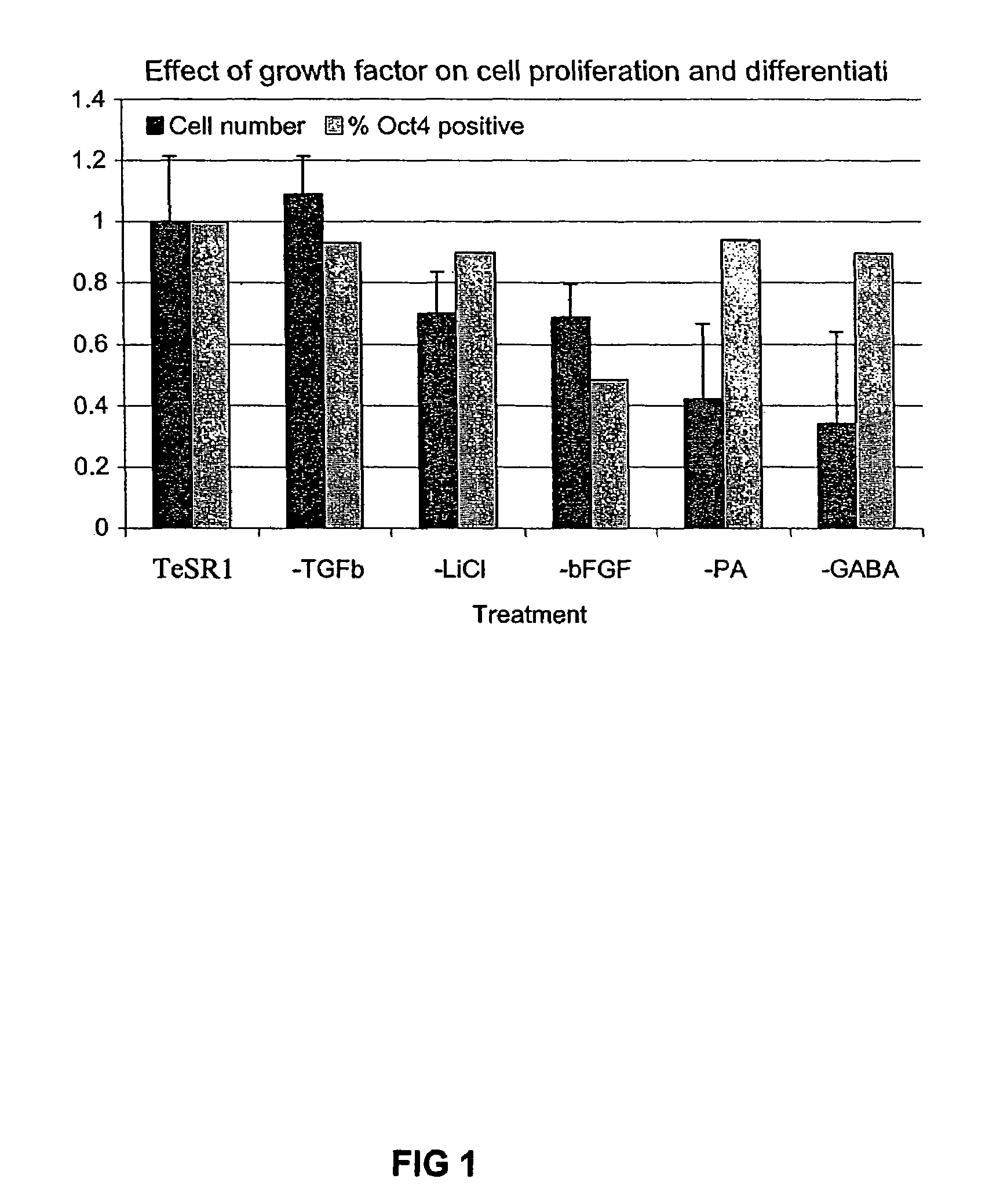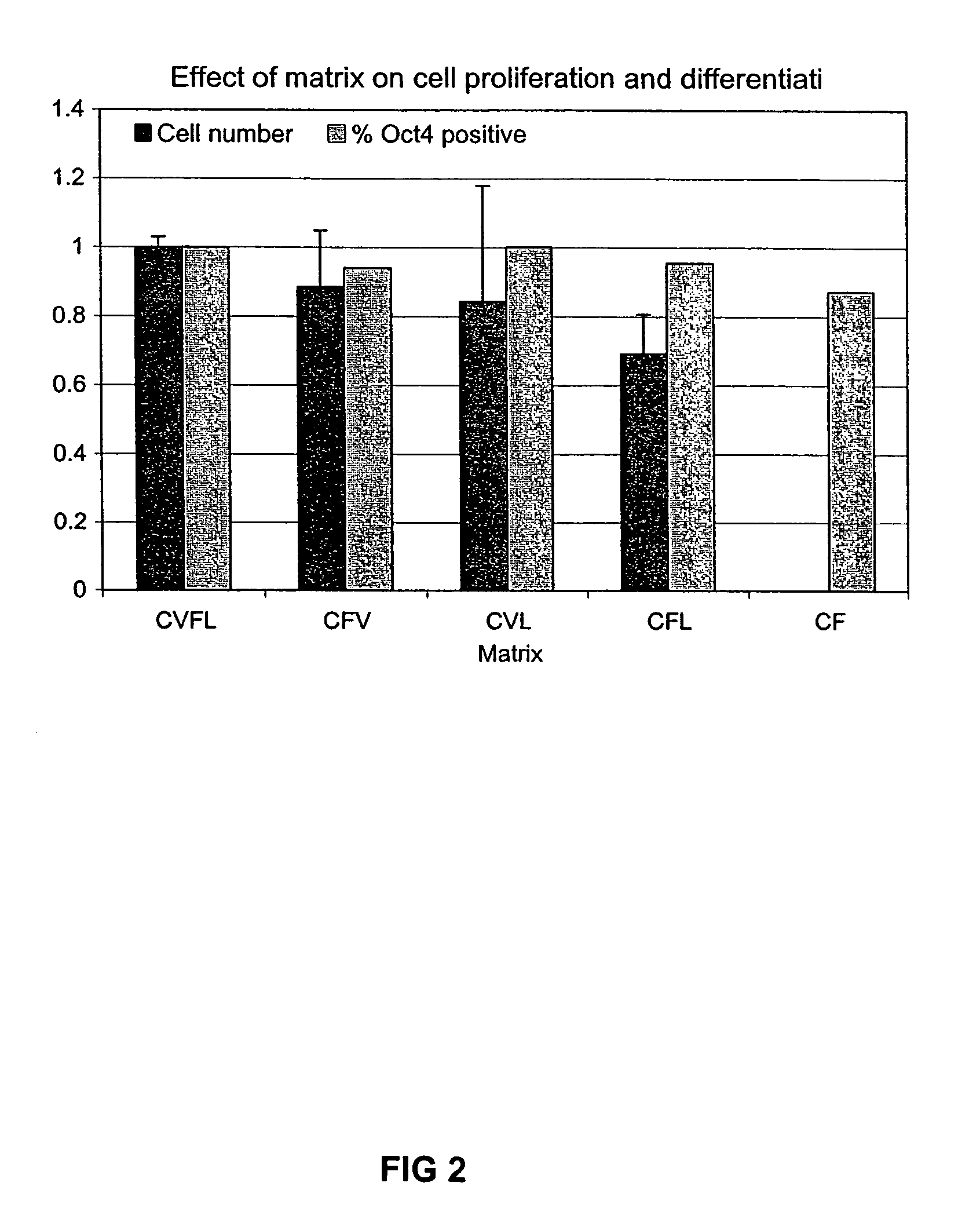Culturing human embryonic stem cells in medium containing pipecholic acid and gamma amino butyric acid
a technology of medium, which is applied in the field of cultivating can solve the problems of limitations, drawbacks, and techniques that work, and the limitations of many procedures currently used to culture human embryonic stem cells, and a limitation is of particular concern
- Summary
- Abstract
- Description
- Claims
- Application Information
AI Technical Summary
Benefits of technology
Problems solved by technology
Method used
Image
Examples
examples
[0027]The constituents of TeSR1 medium, which was used for all cultures described here unless otherwise indicated, is set forth in Table 1 below. Our preliminary experiments suggested that undifferentiated human ES cell proliferation was optimal at a pH of 7.2, an osmolarity of 350 mOsMol, and an atmosphere of 10% CO2 / 5%O2. These conditions were used for all subsequent cultures described here.
[0028]While a medium with all of the above constituents is sufficient and is preferred, not all of the components are necessary for the successful culture of human ES cells. Depending on the amount of differentiated cells one is willing to tolerate, some the components of the medium can be omitted in a medium, particularly if the medium is only used for a few passages. To explore which constituents might be omitted, human ES cells were cultured on variants of the above medium with differing components omitted. Two hundred thousand cells were plated and grown for 7 days on the experimental media...
PUM
| Property | Measurement | Unit |
|---|---|---|
| concentration | aaaaa | aaaaa |
| concentrations | aaaaa | aaaaa |
| concentrations | aaaaa | aaaaa |
Abstract
Description
Claims
Application Information
 Login to View More
Login to View More - R&D
- Intellectual Property
- Life Sciences
- Materials
- Tech Scout
- Unparalleled Data Quality
- Higher Quality Content
- 60% Fewer Hallucinations
Browse by: Latest US Patents, China's latest patents, Technical Efficacy Thesaurus, Application Domain, Technology Topic, Popular Technical Reports.
© 2025 PatSnap. All rights reserved.Legal|Privacy policy|Modern Slavery Act Transparency Statement|Sitemap|About US| Contact US: help@patsnap.com


